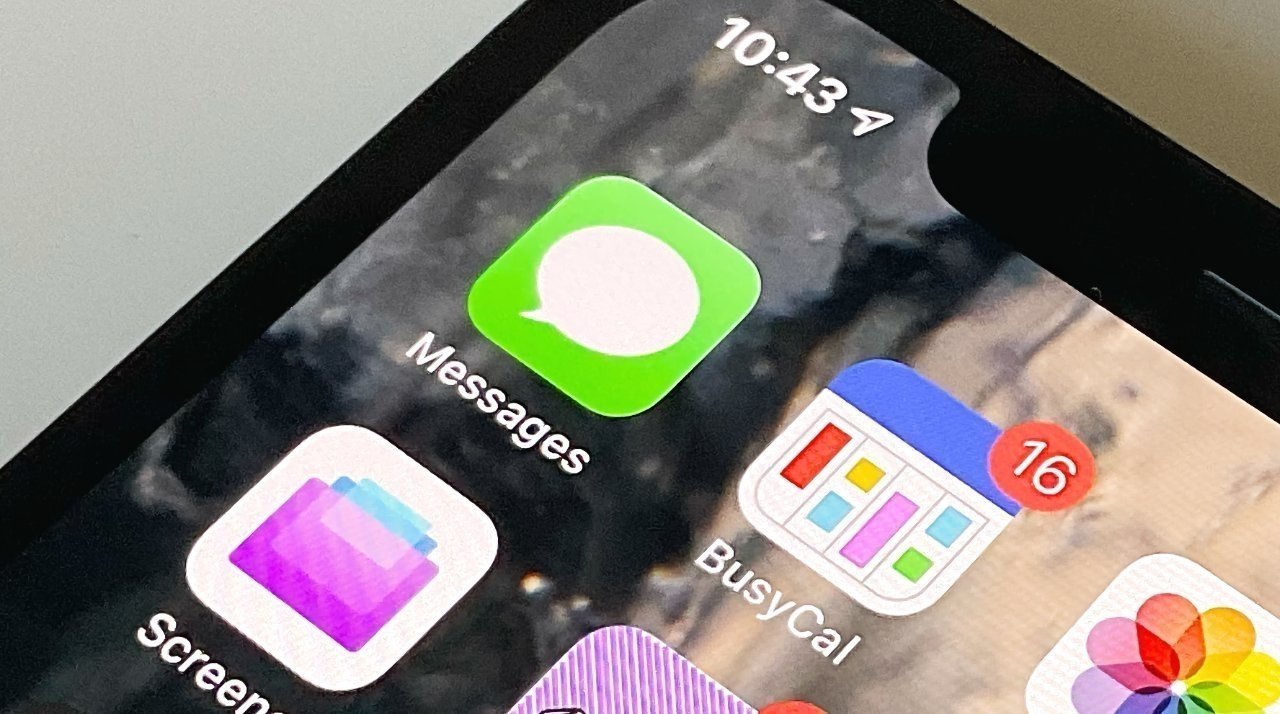Apple's color-coding of SMS communications in green in iMessage plays a role alongside other feature in getting teenagers to switch from Android to iPhone, a report claims, with a pressure to fit in with their peers promoting moves to turn their messages blue.
The use of green and blue to show whether a message to a user is made through iMessage or via other devices has become more than a simple convenience indicator for users. It's also a form of status indicator, showing the user not only owns an iPhone, but can also make use of features on the platform that others cannot.
In a profile of the color-indication system by the Wall Street Journal, teenagers and students explain how not having an iPhone and seeing green messages are seemingly a negative to them.
Michigan student Adele Lowitz told the report she first noticed the difference in status when she experimented with an Android device, prompting a member of her texting group to ask "Who's green?" Lowtiz then found group chats weren't working as seamlessly as when she used an iPhone, as well as causing problems for FaceTime calls and for apps used to find friends.
"In my circle at college, and in high school rolling over into college, most people have iPhones and utilize a lot of those kinds of iPhone-specific features," said Lowtiz. Reckoning that Apple had effectively made a social network with its features, she felt there was "some kind of pressure to get back to that."
Lowtiz had to use an Android device as part of a paid research study, but was quick to return to iPhone soon after. "There's too much within the Apple network for me to switch," she said. A friend was reportedly relieved that she was "Blue again" in her return.
University of Florida senior Miles Franklin discovered that he had missed out on rounds of a game in high school, which he determined was due to being an avid Android user. In 2020, he moved over to iPhone, in part due to preferring it to make TikTok videos.
New York masters student Jocelyn Maher said she was mocked by her friends and younger sister when dating, if the potential suitor used Android. "I was like, Oh my gosh, his texts are green,' and my sister literally went Ew, that's gross,'" said Maher.
Grace Fang of Wellesley College in Massachusetts also saw social dynamics at play regarding iPhones, with Android users apologizing for their device and not having iMessage.
"I don't know if it's Apple propaganda or just like a tribal in-group versus out-group thing going on, but people don't seem to like green text bubbles that much and seem to have this visceral negative reaction to it," she said.
Apple is apparently well aware that iMessage is a serious draw to its users, with it surfacing in the Epic-Apple trial as part of a series of claims it was used to lock users into its ecosystem. Epic pointed to statements by senior Apple management that the company had blocked the creation of an Android version of iMessage.
While Apple debunked rumors of iMessage heading to Android in mid-2016, the claims persisted, including one later that year asserting that mock-ups were made for a client using Google's "Material Design."
In 2018, former iOS development chief Scott Forstall tried to push carriers into adopting a texting standard that shared features with iMessage, a proposal that didn't progress far.
 Malcolm Owen
Malcolm Owen







-m.jpg)






 Marko Zivkovic
Marko Zivkovic
 Mike Wuerthele
Mike Wuerthele
 Christine McKee
Christine McKee
 Amber Neely
Amber Neely
 Sponsored Content
Sponsored Content
 Wesley Hilliard
Wesley Hilliard

 William Gallagher
William Gallagher









61 Comments
SMS is SMS is SMS. Apple’s iMessages is their proprietary system and I think they are under no obligation to produce cross-platform versions of it unless they choose to, like Apple Music. Calling it anti-competitive or anti-trust is just another red herring hoisted up the flagpole to see if anyone salutes.
Critics want Apple to be just another tech company. We all should know that by now.
I'd say the opposite is possibly true in the EU. For years Messages has been a rarely used option as far as I can tell while WhatsApp has been a must use for almost every person I know.
My wife has never ever used Messages for IM. I only know one person that still uses sms for regular messages and that's on Android.
I use WhatsApp, Telegram, Viber and Signal.
Every now and then I see waves of people appearing as new users on Telegram but I'd say WhatsApp is still the IM client that reigns supreme here.
I get irritated when someone in the group has an Android and the entire chat turns green!
Apple led the way, now the others want it to conform. Yeah, sure.
I never understood why Europeans went "whole hog" for WhatsApp. WhatsApp won't do anything until the user gives FaceBook access to their entire contacts, which you know gets uploaded whole hog to the mother roach. Before FB owned WhatsApp, it was the same way, and when the news came out that FB was buying the company, I was relieved to not have used it. Signal demands access to contacts, too, but doesn't upload or store them--or so they say.